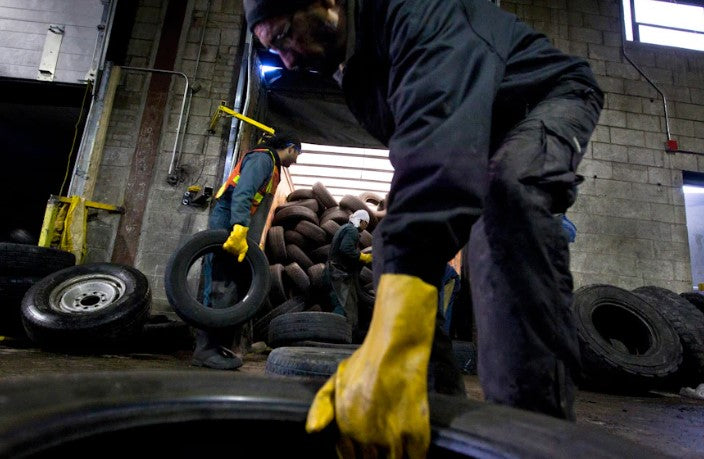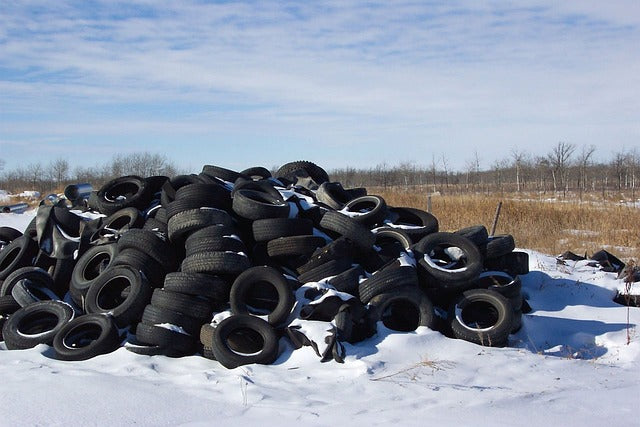
Recycle Right: 5 R’s of Recycling
We know recycling is a valuable practice in working towards a circular economy, but with the increasing amounts of waste being produced, recycling practices need to go beyond your curbside collection.
In 2018, Canadians generated approximately 35.6 million tonnes of municipal solid waste – the waste from our homes and businesses. Of this amount, 9.8 million tonnes were diverted through material recovery facilities or centralized organics processing operations (i.e., recycling and composting). The remaining 25.7 million tonnes were sent for disposal in landfills and incineration facilities for thermal treatment (e.g. energy from waste, gasification) or residual waste processing (e.g. conversion to an alternative fuel source). 
In the waste management industry, we work hard to maximize resource extraction and continue to explore new methods of recovering valuable resources. However, we don’t need to leave all the heavy lifting to recycling companies. If you are keen on implementing sustainability into your consumption habits, then it’s time to learn about the 5 R’s of recycling!
Refuse
The first step in reducing your waste output is to refuse waste from entering your home in the first place. Choose to refuse products that you know cannot be recycled, like single-use plastics and Styrofoam, or items that will be thrown away almost immediately.
However, refusing waste also involves being strategic with your purchases. For example, when shopping, try to refuse impulse purchases of items you don’t really need or won’t be consumed in a timely manner.
Other ways you can refuse excess waste:
- Avoid buying products that are overpackaged, including excessive shipping packaging used for online purchases.
- Opt-in to online banking and receive receipts electronically to minimize unnecessary paper products and junk mail.
- Bring your own cloth bags to the grocery store or mall to refuse single-use plastic bags.
Reduce
When you refuse, you also reduce your consumption and dependency on wasteful materials and the associated negative environmental impacts.
Before buying new items, it is important to consider whether you need the item or whether you will get a lot of use out of it. Smartphone companies are often culprits of excessive waste since they annually release new models that encourage consumers to ditch their old phones and upgrade to the latest tech.
The clothing industry is also guilty of pushing unnecessary purchases on its customers with the concept of fast fashion - inexpensive clothing produced rapidly by mass-market retailers in response to the latest trends. People will buy more to stay on-trend, resulting in “off-trend” items being discarded despite their integrity.
You can reduce your waste output by making slight changes to maximize the products you use more frequently. For example,
- Choose clothing styles that are timeless and versatile.
- Invest in reusable options.
- Avoid using excessive amounts of materials (I.e. cellophane, paper, tin foil, single-use plastic, Styrofoam, etc.), especially those that cannot be reused.
- Shop in bulk to reduce individual single-use packaging on foods and frequently used products.
- Buy new items only when absolutely necessary (this will also help you save money!).

Reuse
Throwaway culture has become our new normal – single-use plastics are present in all our households and businesses. However, we can break our overconsumption habits when we choose to reuse and extend the life of the products we already own.
Here’s how you can introduce reusable products into your routine:
- Replace paper towels with cloth rags and hand towels for cleaning messes. A quick tip: you can make rags out of old t-shirts and other fabric you were planning on throwing away.
- Prioritize buying second-hand and consider upcycling or restoring older furniture and other items before you buy new.
- Use what you have, then invest in reusable products (I.e. cloth grocery bags, food containers, metal straws, refillable soap dispensers, etc.)
There is no overnight fix when it comes to sustainability; it is a process of introducing eco-friendly practices and making them into habits that will not only benefit your wallet but also the planet. Once you master one practice, work on developing a new eco-friendly habit and explore new ways to reuse current products or materials.
Repurpose & Repair
There are plenty of products that end up in landfills that could have easily been repurposed or repaired. We are all culprits of discarding items before they truly reach their end of life, especially with fad culture, but making the effort to repurpose or repair items before buying new can save materials and money.
Here are a few ideas to help you extend the life of your current products:
- When the new iPhone comes out, many of us scramble for the upgrade to have the latest and greatest tech on the market, yet our current phones are near-new with minor faults. While we are not all engineers, many tutorial videos online can help guide you in fixing electronics and other equipment to make them last longer.
- Holes in your socks again? Get out your needle and thread to sew up holes in your clothes or turn your old clothes into extra rags for cleaning.
- Use super glue for temporary or permanent fixes depending on the product.
Recycle
With anything that we cannot refuse, reduce, reuse, repair or repurpose, we should determine whether it can be recycled. If you don’t already, start collecting cardboard, mixed paper products, commingled materials (plastics, aluminum, glass) and organics. Check with your region to see what recycling programs are available for curbside collection and adhere to their acceptable items list.
If items are not accepted in your curbside collections, that doesn’t mean they are garbage by default. Certain products require tailored recycling processes, such as electronics, hazardous materials (I.e. cleaners, pesticides or any product with a hazard or combustible label), and organics. Check with your regional council if there are any recycling facilities in your area that accept these materials.
Need more tips? Read our blog on how to Recycle Right.



